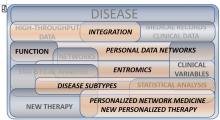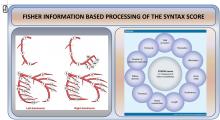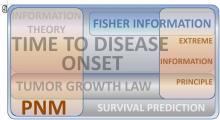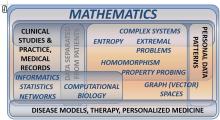Fisher information provides tools to derive laws, underlying observed data distributions. In cancer, the power law for tumor growth is derived by answering the question, what is the mathematical function, consistent with histogram of tumor masses, determined from CT images of liver cancer patients. The starting point of finding the solution is "just" a general requirement that CT scan data reflect maximal information about underlying cancer-related biological processes. All necessary input is obtained from standard practice data, the result is therefore a clinically relevant survival prediction method with added mechanistic insight into tumorigenesis. Preprint of paper to appear in 2014 Seminars in Oncology is here. Easy to use Excel worksheet implementation of survival prognosis for HCC patients by the method described in our paper can be downloaded here. Please make sure that you enable worksheet editing after opening it or downloading, as your computer might set it into "Read only" status, preventing data entry.





